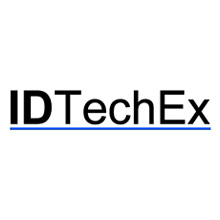 |
| Cubic pointed out to IDTechEx that Mifare for Mobile from NXP gives speed same as transportation card ticketing |
In the many interviews and research carried out for the new IDTechEx report "Near Field Communication (NFC) 2014-2024", considerable disagreement was commonplace. IDTechEx first issued a major report on this subject five years ago when there were concerns about deployment which is much less an issue today given the huge deployment of NFC-enabled mobile phones and tablets in the last year. However, other concerns are still said to be holding up the market such as the slower speed of transaction when entering a mass transit system using NFC vs a transport contactless card. Yet leading expert David deKozan, Vice President, Cubic Transportation Systems, Inc. robustly contests the arguments in some of the media that the old problems of slow speed and difficulty of coping with a physically closed system are side-lining mobile phone ticketing in mass transit systems such as subways.
"Absolutely not, a significant percentage of transportation ticketing will be by (NFC) mobile phones in future" he declared to IDTechEx, pointing out that Mifare for Mobile from NXP gives a speed the same as transportation card ticketing. As for the entry-and-exit transaction with knowledge of location and therefore distance travelled on railways and subways, said to be a problem for financial cards set up for one shot transactions, he noted that their Chicago system has one of several possible work rounds by having the back office assemble the "taps" (transactions/ events) ahead of the bank card interrogation which can then be one shot.
However, he thought that some emulations of financial cards on mobile phones require the phone to be switched on, the card selected and the PIN entered and "This is not the greatest use case" for transportation. There is also a conflict of objectives with EMV financial cards. The contactless PIN in mobile wallets also has issues in his opinion.
Dominic Hirsch, Managing Director of RBR (formerly Retail Banking Research) gave a somewhat different view again. RBR is a strategic research and consulting firm with three decades of experience in retail banking, banking automation and payment systems.
"By contrast, there is a frenzy of activity with non-payment uses of NFC and the huge enthusiasm of most in the value chain will result in widespread use, given that device owners increasingly welcome a lot of this" |
In an extended interview concerning the financial and transport ticketing aspects of NFC, Dominic Hirsch pointed out that the banking community tends to refer to the contactless phenomenon which has included contactless cards for a very long time and now adds the more recent NFC. He notes how it took a very long time for contactless cards to be accepted but now they are widely used for small payments e.g. the stored value (prepayment) MasterCard PayPass and transit ticketing e.g. The London Oyster card. Where it is best suited, NFC will catch on, he says, but on a timescale about five years behind, "In five years, NFC will be where contactless smart cards are today." He said, pointing out that his observations refer to his field of expertise, financial payments including transport ticketing.
In the interview with IDTechEx, he pointed out that contactless cards have been primarily aimed at small payments but, even here, they are not adopted by people like news stand vendors and vending machines in the main because merchant fees would wipe out their profit. Contactless payments therefore stick at only certain small payments, including a rapidly increasing number of retail stores but even here the majority in the world still do not have contactless terminals. He said this has implications for how fast NFC can roll out. It is relatively unattractive to use a payment medium only some of the time though that is a problem all other payment media also face. Still, NFC-enabled payment can represent proliferation of partial solutions.
Primary author of the new report, "Near Field Communication (NFC) 2014-2024", Dr Peter Harrop says, "There are now fixes for all the major impediments to use in payments and ticketing of NFC-enabled mobile phones and tablets but considerable user indifference and ignorance remains and alternatives are well embedded in the market and in some respects superior. NFC electronic devices will definitely be used for an appreciable number of payments and for much transportation ticketing over the next decade but will not be dominant in that time-frame, if ever. By contrast, there is a frenzy of activity with non-payment uses of NFC and the huge enthusiasm of most in the value chain will result in widespread use, given that device owners increasingly welcome a lot of this. The nature and destination of the non-financial NFC earning streams from non-financial NFC functionality is less clear however. Robust debate continues."
Learn why leading casinos are upgrading to smarter, faster, and more compliant systems






















